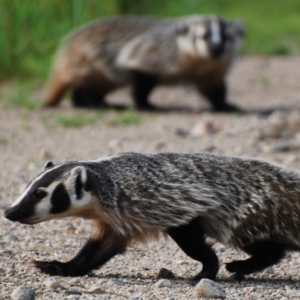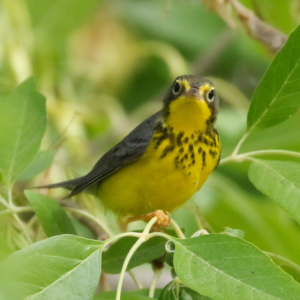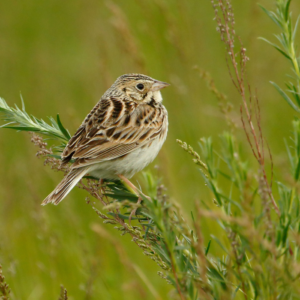American Eel
This eel has a complex life cycle, and is thought to have the broadest habitat range out of any fish in the world. Save endangered species today by joining one of our campaigns!
Help End the ExtinctionVital Signs
- Common name: American Eel
- Latin name: Anguilla rostrata
- Conservation Status: Threatened
- Range: Ontario, Quebec, New Brunswick, Prince Edward Island, Nova Scotia, Newfoundland and Labrador, Atlantic Ocean
- Life span: Up to 50 years
- Size: Adult females can reach 1 metre in length, males are shorter than 40 cm in length
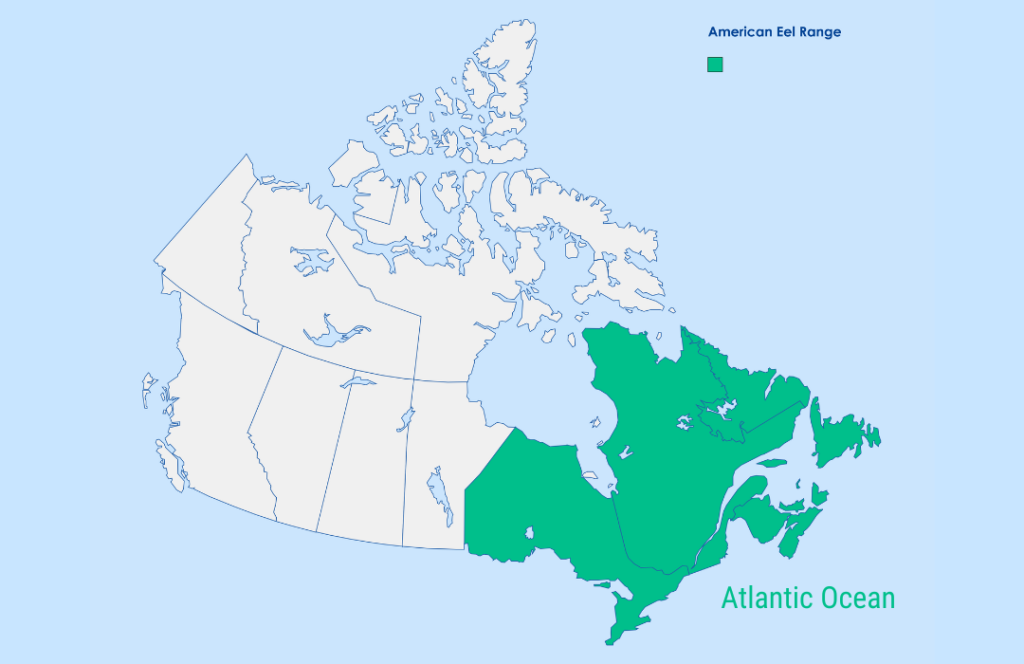
The American Eel is long and skinny, with a fin extending from its back and stomach to its tail. This eel is characterized by having “thick lips” and a lower jaw that’s slightly longer than the upper one. It also has multiple rows of teeth. Adult eels tend to be grey with a white or cream-coloured belly.
American Eel Facts
- Also known as Atlantic Eel, Common Eel, Yellow Eel, Silver Eel, Bronze Eel, and Easgann
- Has different names depending on their growth stage. They start as larvae, then become “glass eels,” then “elvers,” then “yellow eels.” When they’re full grown, they’re called “Silver Eels”
- Live in freshwater habitats and saltwater habitats, so long as they connect to the Atlantic Ocean
- As a Yellow Eel, they feed at night and eat small fish, mollusks, insects, and crustaceans
- Takes 8-23 years to become Silver Eels, and only after this are the eels able to return to where they were born and have babies of their own
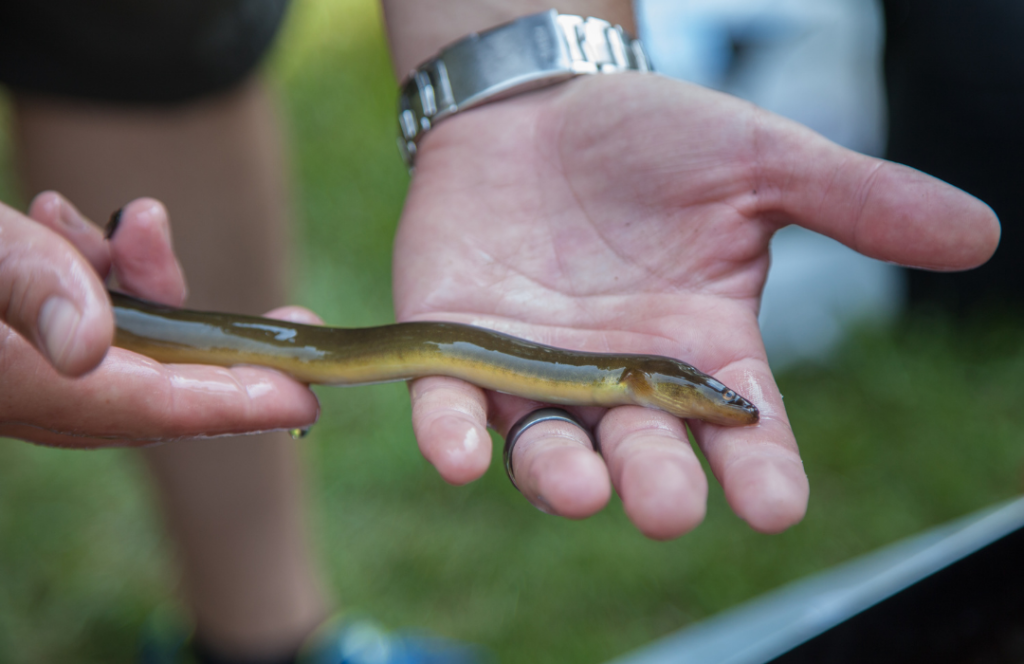
Threats
American Eels are very sensitive to change in environmental conditions, so things like habitat alteration and climate change are big threats. They are also affected by the construction of dams, turbines, and by fishing harvest.
Encountering obstacles in the water is also a risk, as this interferes with young eels’ ability to travel upstream, and this causes habitat fragmentation. When eels return to their spawning grounds as adults, the obstacles cause more problems such as delaying movements and an increase in deaths and injuries.
The threats faced by American Eels impact other animals and humans, as this eel is noted to play “an important role in Canada’s aquatic biodiversity.”
What’s Being Done
The American Eel is listed under Ontario’s Endangered Species Act and Newfoundland and Labrador have listed it as “vulnerable” under their Endangered Species Act. In Quebec, it is currently being considered for listing under the Act Respecting Threatened or Vulnerable Species.
There is also a report, called Returning Kichisippi, the American Eel, to the Ottawa River Basin, by the Algonquins of Ontario that was published in 2012. It calls for more protection for the American Eel and includes valuable information that should be considered in recovery efforts.
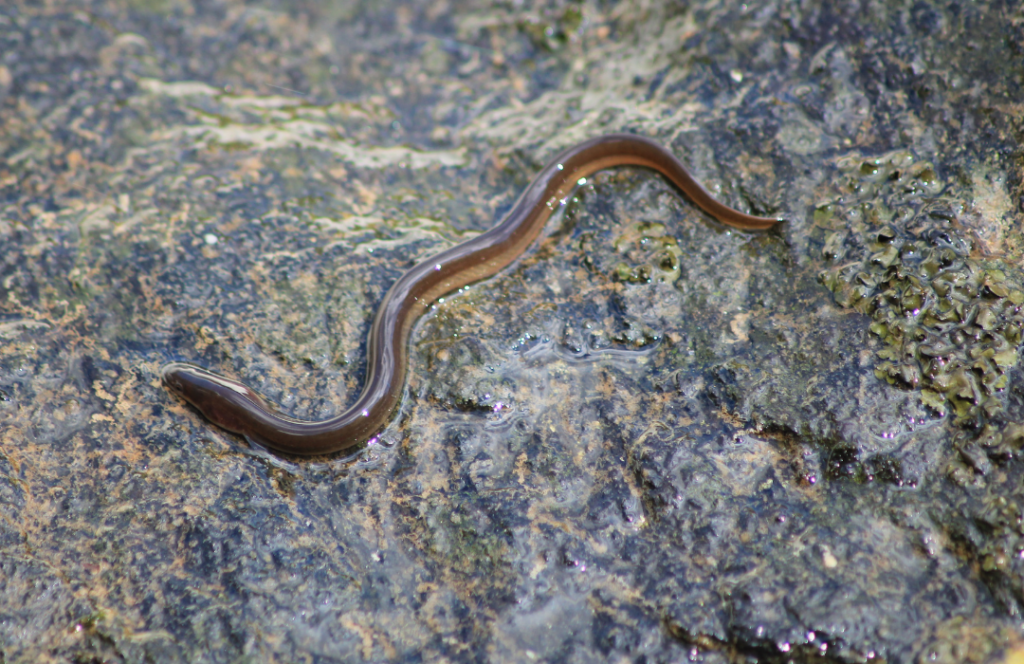
Canada has committed to the goal of protecting 30% of lands, ocean, and freshwater in Canada by 2030. This goal will help protect ecosystems, restore habitats, and fight climate change. All these things are a step in protecting Canada’s at-risk animals—so let’s hold the federal government to their promise.
How to Help
- Learn: Stay informed about endangered species by signing up for Nature Canada’s monthly e-newsletter.
- Take Part: Join our National Marine Area Conservation campaign!
- Find out more: Help us end the extinction by taking action for nature today—visit conservation websites like Nature Canada or join one of our campaigns!
Resources
- Algonquins of Ontario – Returning Kichisippi Pimsi, the American Eel, to the Ottawa River
- COSEWIC – Assessment and Status Report
- Hinterland – Who’s Who: American Eel
- SARA – Species Profile

